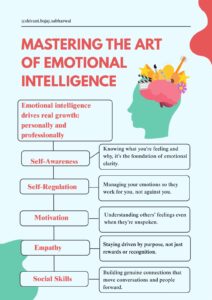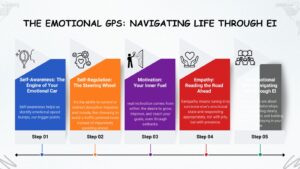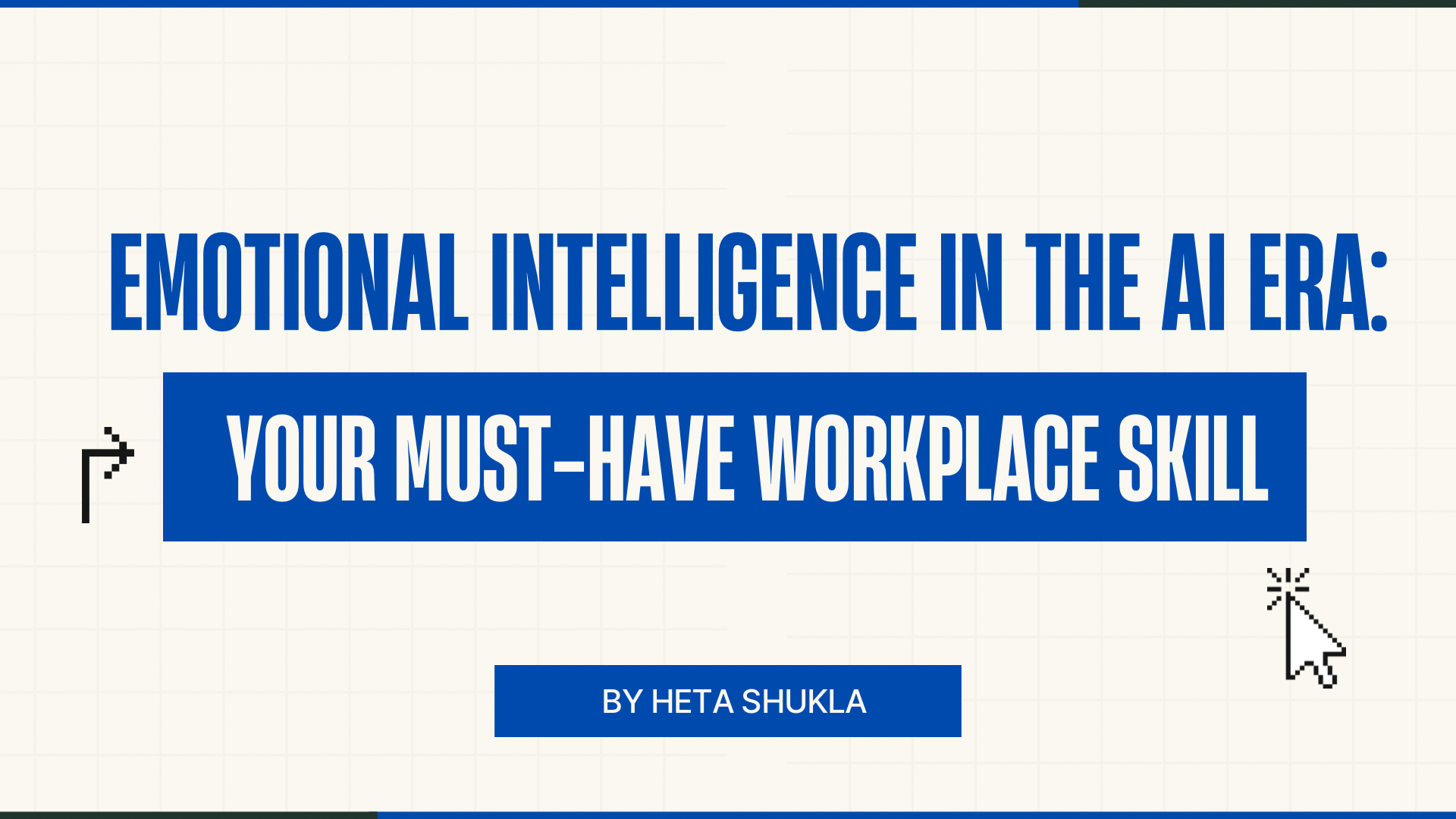The Emotional GPS: Navigating Life Through EI
Ever noticed how, before hitting the road, we switch on Google Maps to find the shortest, smoothest, least traffic-clogged route?
We trust it to guide us, avoid jams, and prevent wrong turns.
Now here’s the thing, we all have an internal GPS too.
And it’s called Emotional Intelligence (EI).
It helps us track what we’re feeling, navigate tricky conversations, manage conflicts, and make better decisions without getting stuck in the traffic of overreactions or crashing into emotional triggers.

Step 1: Self-Awareness: The Engine of Your Emotional Car
Just like learning to drive a car, using this inner GPS takes practice.
Remember the basics of driving ABC: Accelerator. Brake. Clutch?
Here’s how they show up in Emotional Intelligence:
- Brake (Pause): Hit pause. Acknowledge what you’re feeling without reacting.
- Clutch (Process): Reflect on why you’re feeling this way. What triggered you? How might this affect others?
- Accelerator (Express): Move forward by expressing your emotions clearly and not explosively.
Self-awareness helps us identify emotional speed bumps, our trigger points.
It helps us recognize our strengths and blind spots.
But here’s the key: before we ask “How do I express myself?”,
we must first ask “What exactly am I feeling and why?”
Because without clarity inside, communication outside is just noise.
Practices like journaling or grounding exercises work like regular car servicing. They keep your emotional engine running smoothly.
Step 2: Self-Regulation: The Steering Wheel
Once you’ve mapped your inner world through self-awareness, you’re ready to take the wheel.
Self-regulation is where we learn how to steer.
It’s the ability to control or redirect disruptive impulses and moods, like choosing to avoid a traffic-jammed route instead of impulsively speeding ahead.
This is where the 3 P’s: Pause, Process, processed; come alive.
Let’s break it down:
- Reacting is like seeing a red zone on Google Maps from a previous report and instantly taking a detour- without checking if the roads actually blocked now.
- Responding is using the alert wisely, pausing, assessing the current situation, and then making a calm, informed choice.
Self-regulation gives you the power to say “No” when needed.
To stop people-pleasing.
To stay steady instead of spiralling.
You’re not being driven; you’re in charge of the drive.
Step 3: Motivation: Your Inner Fuel
Motivation is your internal fuel, not driven by praise or reward, but by purpose.
Just like GPS doesn’t care for applause when it helps you find a shortcut,
real motivation comes from within: the desire to grow, improve, and reach your goals, even through setbacks.
It’s about setting your own destination and choosing to keep driving, even on tough roads.
Step 4: Empathy: Reading the Road Ahead
Have you ever heard a traffic update on the radio about a waterlogged road, and thought, “Poor people, they’re stuck for hours”?
That’s sympathy.
But empathy is different.
It’s pulling over and imagining what it’s like to actually be in that jam.
To feel the heat, the honking, the helplessness.
It’s the difference between hearing someone and truly understanding them.
In Emotional Intelligence, empathy means tuning in to someone else’s emotional state and responding appropriately, not with pity, but with presence.
Try this:
Spend just 5 -10 minutes imagining life in someone else’s shoes.
Even that small shift can transform how you connect and respond.
Step 5: Social Skills – Navigating the Traffic
You could be the best driver in the world, but if you don’t understand traffic rules, you’ll still end up in trouble.
The same goes for emotions.
Social skills are about managing relationships, communicating clearly, resolving conflict, and building rapport while staying in your lane.
It’s not just about understanding your emotions, but also knowing how to interact with the emotional traffic around you.
When you blend empathy with communication,
when you listen, lead, and adapt, you create flow, not friction.

Therefore, please note:
Your emotions aren’t the problem.
Not knowing how to drive them is.
But once you switch on your Emotional GPS:
Self-Awareness. Self-Regulation. Motivation. Empathy. Social Skills.
You’re no longer just a passenger in an automated ride.
You’re in the driver’s seat now.
And that changes everything.





Leave a Reply